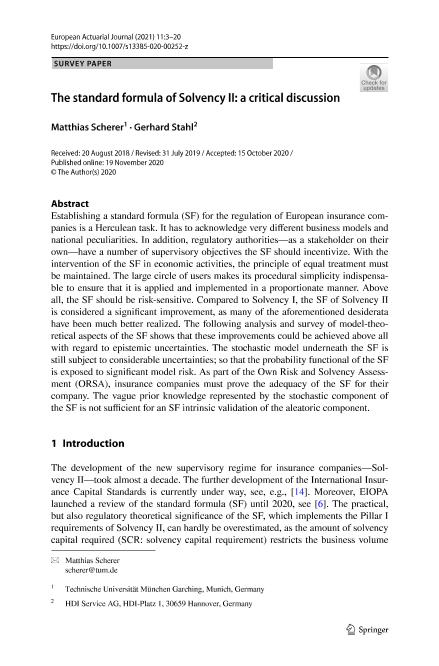Related records: En: European Actuarial Journal. - Cham, Switzerland : Springer Nature Switzerland AG, 2021-2022. - 07/06/2021 Volúmen 11 - Número 1 - junio 2021 , p. 3-20Materia / lugar / evento: Solvencia II Empresas de seguros Evaluación de riesgos Otros autores: Stahl , Gerhard
Other categories: 6


